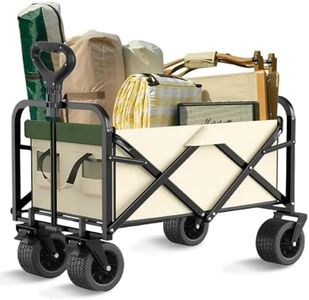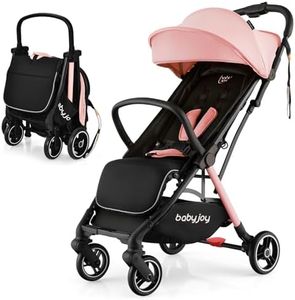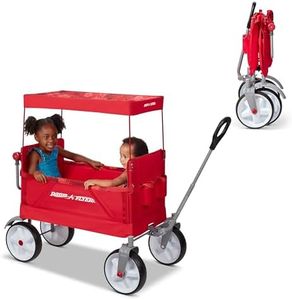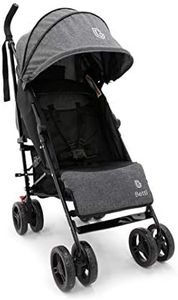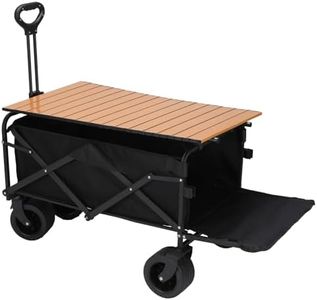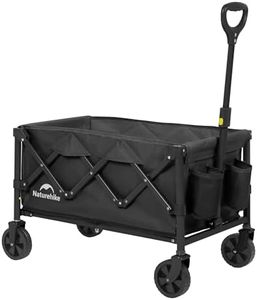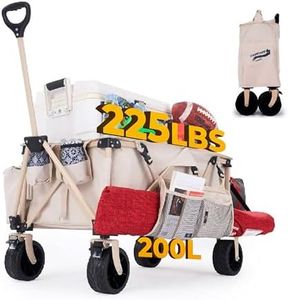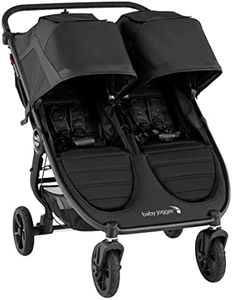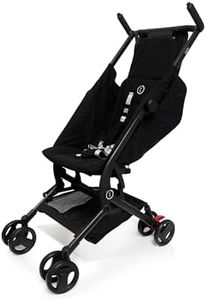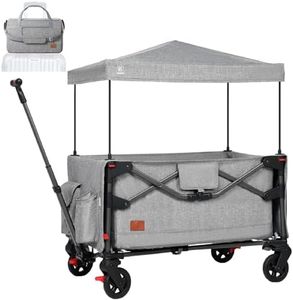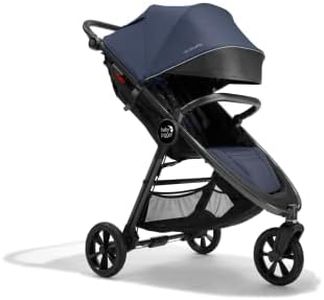We Use CookiesWe use cookies to enhance the security, performance,
functionality and for analytical and promotional activities. By continuing to browse this site you
are agreeing to our privacy policy
10 Best Beach Strollers
From leading brands and best sellers available on the web.Buying Guide for the Best Beach Strollers
Choosing the right beach stroller can make your seaside adventures with little ones much more enjoyable and hassle-free. Unlike standard strollers, beach strollers are designed to tackle challenging terrains like sand and rough paths, while keeping your child comfortable and safe. When selecting one, it's crucial to focus on how it will be used — whether for occasional trips to the shore or regular outings on various outdoor surfaces. Always consider your child's comfort, safety, and how easy the stroller will be for you to push or transport.Wheel Type and SizeWheel type and size determine how easily the stroller can move across sand and other uneven terrains. Larger wheels, especially those made from rubber or air-filled tires, are better suited for soft sands, as they can glide more smoothly and won't sink in as easily as smaller, hard wheels. Some strollers have three wheels (jogging-style), which generally handle rough surfaces better. If you plan to use your stroller mostly on beaches or trails, aim for bigger, wide-set wheels; for mixed terrain, balance between size and portability is key.
Frame Material and WeightThe frame material and weight influence how easy it is to carry or push the stroller, especially when moving through sand. Aluminum frames are lighter and resistant to rust from saltwater, making them a popular choice for beach use. Heavier steel frames may be more durable but can be cumbersome on sand. If you’ll need to carry the stroller onto the beach or lift it often, opt for a lightweight yet sturdy frame.
Canopy and Sun ProtectionA stroller’s canopy protects your child from the harsh sun, providing shade and sometimes UV protection. Larger, extendable canopies offer more coverage, while some models might include mesh extensions for extra ventilation. If you spend long hours on the beach or in sunny conditions, prioritize a stroller with a robust canopy to keep your little one comfortable and shielded from UV rays.
Storage and Cargo SpaceHaving enough space to store beach gear, snacks, and baby essentials is crucial. Look for strollers with generous baskets and multiple pockets that are easy to access, even when the seat is reclined. If you tend to pack extra towels, toys, or picnics, more storage will help keep your hands free and make outings smoother.
Folding Mechanism and PortabilityHow a stroller folds and its size when collapsed affects portability — especially if you need to put it in a car trunk or carry it over dunes. Strollers that offer one-hand folding or compact designs are easier for parents on the go. If you value convenience or have limited space, consider these aspects carefully.
Brakes and Safety FeaturesReliable brakes are vital for safety, especially on slopes or at the water’s edge. Some strollers have foot-activated brakes, while others have hand-operated systems. Additional safety features, such as a five-point harness, ensure your child is secure during bumpy rides. Choose a model where safety systems are easy to engage and comfortable for your child.
Ease of Cleaning and DurabilityExposure to sand, salt, and water means your stroller should be easy to clean and made from durable, weather-resistant materials. Removable, washable fabrics and simple-to-wipe frames can save you time and keep the stroller in good shape. If you plan frequent beach trips, ease of maintenance becomes even more important.
